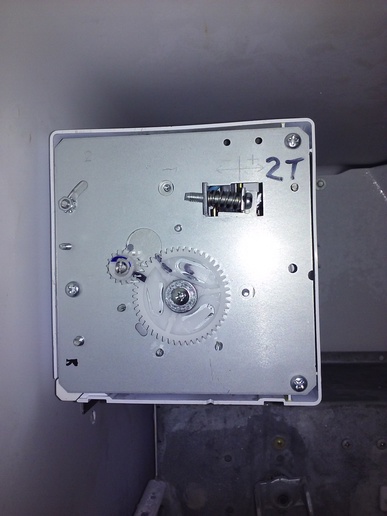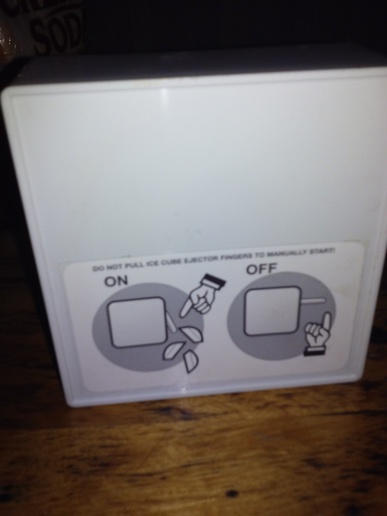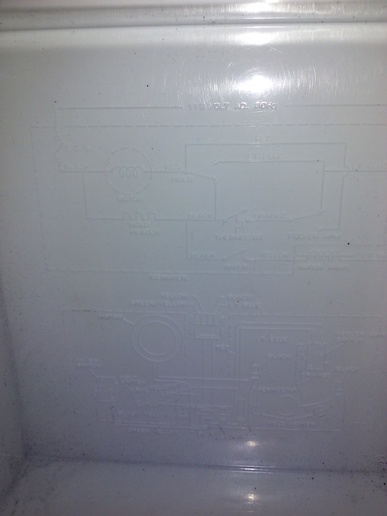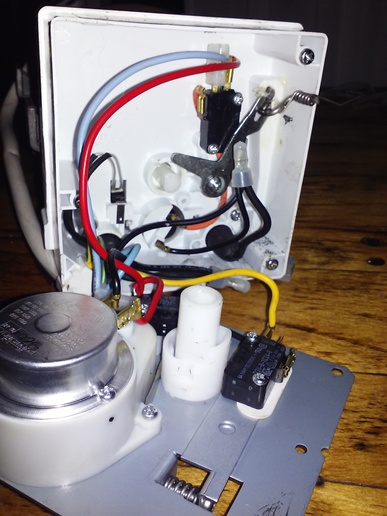Geo-TH,In
Well-known Member
I learned many things that may be helpful to those who what the challenge of fixing their ice maker. First I discovered that on the backside of cover is a circuit diagram, without it I couldn't have fixed it. My ice maker wouldn't fill with water, it would spin like it was dumping but no ice. If I would poured water in the tray, it would make ice. I also learned if you put too much water in tray, the cubes will be fused together at the top. Nice to know when you adjust the water level on the ice maker. To do that there is a screw with a spring. In the first and third pic, you will see next to the screw 2T ( I goofed and posted pic twice.) I turned my screw 2 turns out towards the + direction. I removed the large plastic gear that turns the timing cam and also dumps the ice out of tray after a heating element thaws the tray. I slowly turned the cam while measuring the ohms between the black wire, power, and the yellow wire that sends power to the water solenoid that fills the ice maker. When the micro switch hit the right place on cam, power to be sent to solenoid. The crazy thing is, the power doesn't get to the solenoid directly, it first travels through the tray heating element, element is in series with solenoid.
My first post Keith suggested changing the water filter, which I did and the flow rate improved 3 times. Tim mentioned the light switch in freezer door. That's important too. While I was watching the ice maker go through it's cycle the first time, no water came out. I was watching it with the door open, lights on. It started making a second cycle because no water filled the tray. I took a glass and learned no water was coming out the door either. So I pushed the door switch in, light went out and when the large gear got to the correct place, WATER STARTED FLOWING.
So was it the filer or the water level adjustment or both? Not sure, just glad I figured it out. Thanks to all for your suggestiohns. I never like spending money on repairs. I have learn how things work and I feel like I went to school on ice makers today.
Hope this helps if you have a problem.





My first post Keith suggested changing the water filter, which I did and the flow rate improved 3 times. Tim mentioned the light switch in freezer door. That's important too. While I was watching the ice maker go through it's cycle the first time, no water came out. I was watching it with the door open, lights on. It started making a second cycle because no water filled the tray. I took a glass and learned no water was coming out the door either. So I pushed the door switch in, light went out and when the large gear got to the correct place, WATER STARTED FLOWING.
So was it the filer or the water level adjustment or both? Not sure, just glad I figured it out. Thanks to all for your suggestiohns. I never like spending money on repairs. I have learn how things work and I feel like I went to school on ice makers today.
Hope this helps if you have a problem.






